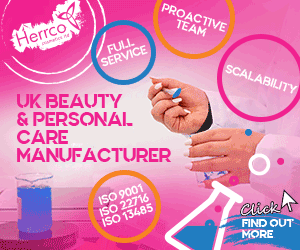Key takeaways:
- New definition specifies dimensions and key elements in defining nano-materials
- European Commission places 12 nano-ingredients on its ‘banned’ list
- Cosmetic companies have 9-18 months to adjust to new legislation
Cosmetic companies are on the lookout after the European Commission has revised its definition of nano-materials for legislative purposes in an attempt to bring uniformity in its Cosmetic Regulation and align the regulatory framework with other sectors. Whereas the previous definition focused on defining nano-particles by the size of their external dimensions ranging from 1nm to 100 nm, the new definition expands on this by adding particles that have ‘an elongated shape, such as a rod, fiber or tube, where two external dimensions are smaller than 1 nm and the other dimension is larger than 100 nm,’ but also ‘the particle has a plate-like shape, where one external dimension is smaller than 1 nm and the other dimensions are larger than 100 nm.’ Additionally, it clarifies the nano-material as ‘consisting of solid particles present, either on their own or as identifiable constituent particles in aggregates or agglomerates,’ which is an expansion of its previous definition.
More urgent for cosmetic companies is the list of banned nano-ingredients that has been expanded with 12 new nano-ingredients, which the Commission updated in February 2022 after it notified the World Trade Organization of the future ban. These nano-ingredients are: tyrene / Acrylates copolymer (nano); Sodium Strylene / Acylates copolymer (nano); Copper (nano); Colloidal Copper (nano); Hydroxyapatite (nano); Gold (nano); Colloidal Gold (nano); Gold Thioethylamino Hyaluronic Acid (nano); Acetyl heptapeptide-9 Colloidal gold (nano); Platinum (nano); Colloidal Platinum (nano); Acetyl tetrapeptide-17 Colloidal Platinum (nano).
The Regulation, which is expected to enter into force in September 2022, stipulates that the products containing these ingredients cannot be placed on the EU market nine months from the entry into force. After 18 months, cosmetics containing these substances cannot be sold to consumers.
Nano-materials are most frequently used as colorants, preservatives, or UV filters; however, their use has to be in accordance with the European Commission’s Cosmetic Regulation. Additionally, nano-materials that do not function as colorants, preservatives, or UV filters have to be notified to the Cosmetic Products Notification Portal (CPNP) 6 months before being placed on the EU market, as per Article 16 of the EU’s Cosmetics Regulation. The European Commission prompts manufacturers to label any ingredients that contain nano-particles with ‘nano’ in brackets (nano).
Nano-particles are widely used in cosmetics, but the research on their health effects on humans is still inconclusive. Researchers argue that the smaller a particle is, the greater the risk of its being toxic and this is mainly because the chemical properties of particles at the nanoscale can differ from the same substance at a larger scale. However, there is still a limited understanding of the actual health risks. The research and therefore regulation of nano-materials remains a dynamic field that is updated monthly, so be sure to check with us for any news on this topic.





